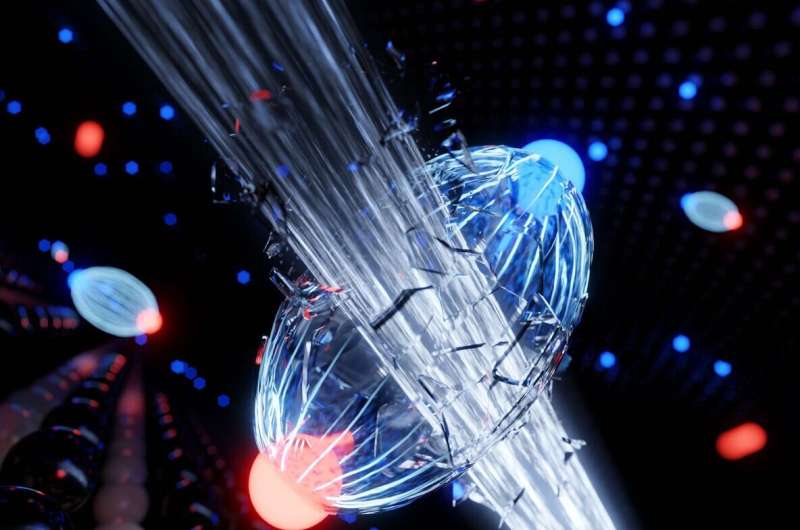This article has been reviewed according to Science X's editorial process and policies. Editors have highlighted the following attributes while ensuring the content's credibility:
fact-checked
peer-reviewed publication
trusted source
proofread
Measuring exciton 'holes': Insights into charge transfer at atomically thin interfaces between semiconductors

Semiconductors are ubiquitous in modern technology, working to either enable or prevent the flow of electricity. In order to understand the potential of two-dimensional semiconductors for future computer and photovoltaic technologies, researchers from the Universities of Göttingen, Marburg and Cambridge investigated the bond that builds between the electrons and holes contained in these materials.
By using a special method to break up the bond between electrons and holes, they were able to gain microscopic insight into charge transfer processes across a semiconductor interface. The results were published in Science Advances.
When light shines on a semiconductor, its energy is absorbed. As a result, negatively charged electrons and positively charged holes combine in the semiconductor to form pairs, known as excitons. In the most modern two-dimensional semiconductors, these excitons have an extraordinarily high binding energy.
In their study, the researchers set themselves the challenge of investigating the hole of the exciton.
As physicist and first author Jan Philipp Bange from the University of Göttingen explains, "In our laboratory, we use photoemission spectroscopy to investigate how the absorption of light in quantum materials leads to charge transfer processes. So far, we have concentrated on the electrons that are part of the electron-hole pair, which we can measure using an electron analyzer. Up to now, we didn't have any way to directly access the holes themselves. So, we were interested in the question of how we could characterize not just the electron of the exciton but also its hole."
To answer this question, the researchers, led by Dr. Marcel Reutzel and Professor Stefan Mathias at Göttingen University's Faculty of Physics, used a special microscope for photoelectrons in combination with a high-intensity laser. In the process, the breaking up of an exciton leads to a loss of energy in the electron measured in the experiment.
Reutzel explains, "This energy loss is characteristic for different excitons, depending on the environment in which the electron and the hole interact with each other." In the current study, the researchers used a structure consisting of two different atomically thin semiconductors to show that the hole of the exciton transfers from one semiconductor layer to the other, similar to a solar cell. Professor Ermin Malic's team at the University of Marburg was able to explain this charge transfer process with a model to describe what happens at a microscopic level.
Mathias says, "In the future, we want to use the spectroscopic signature of the interaction between electrons and holes to study novel phases in quantum materials at ultrashort time and length scales. Such studies can be the basis for the development of new technologies and we hope to contribute to this in the future."
More information: Jan Philipp Bange et al, Probing electron-hole Coulomb correlations in the exciton landscape of a twisted semiconductor heterostructure, Science Advances (2024). DOI: 10.1126/sciadv.adi1323
Journal information: Science Advances
Provided by University of Göttingen




















